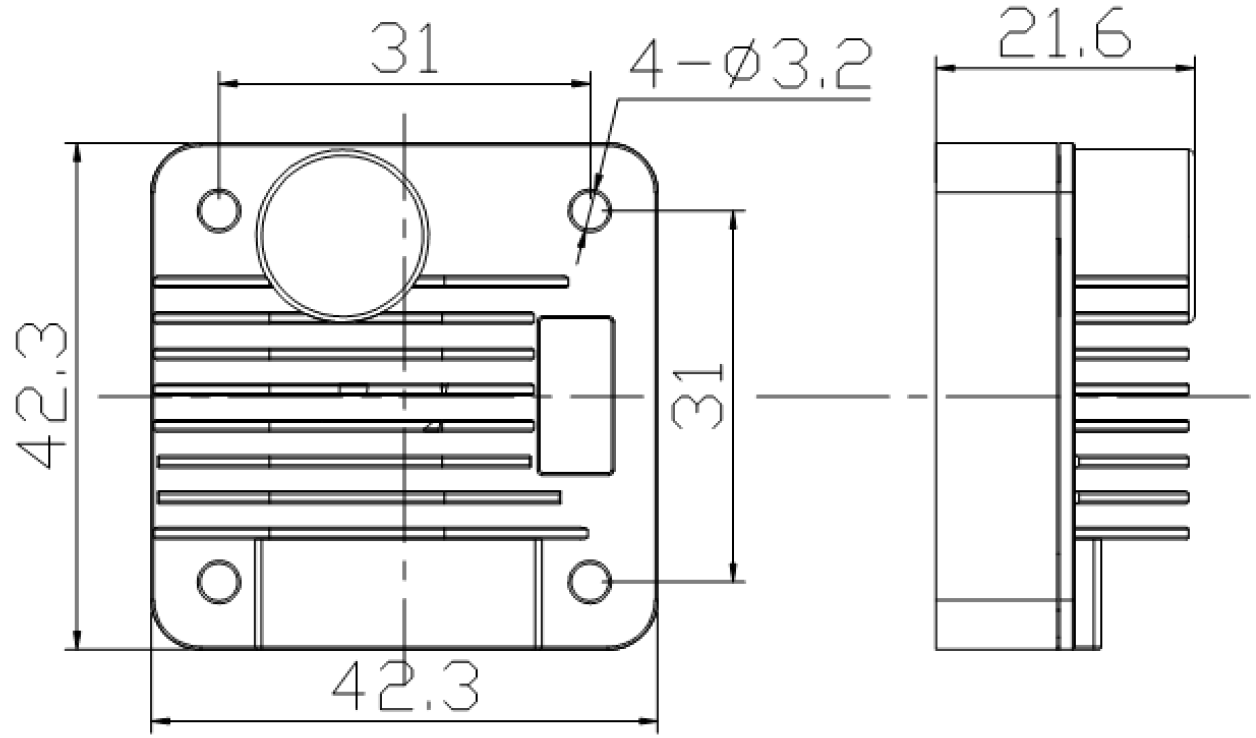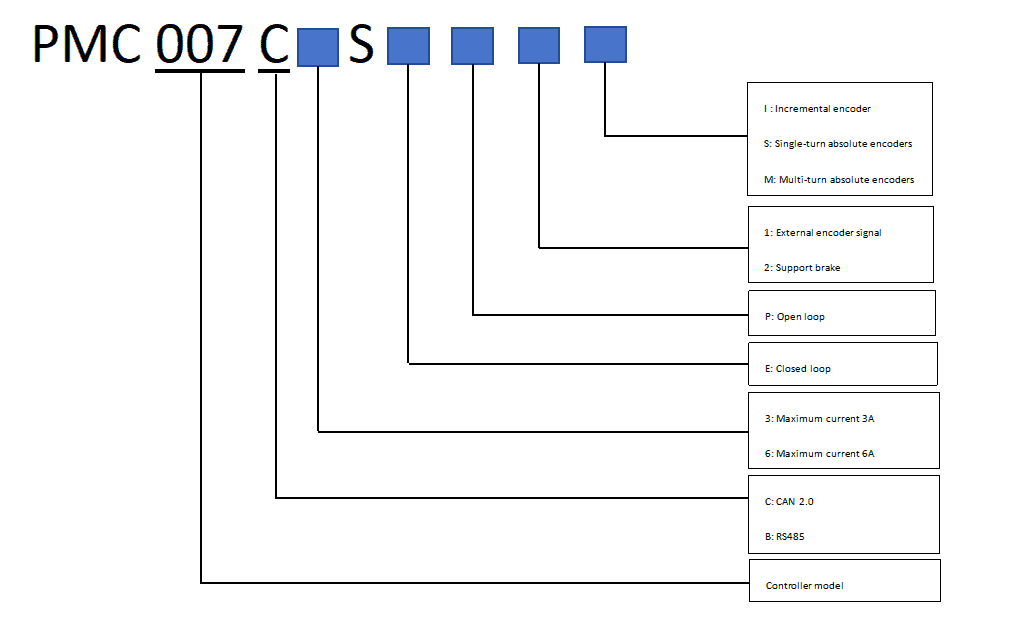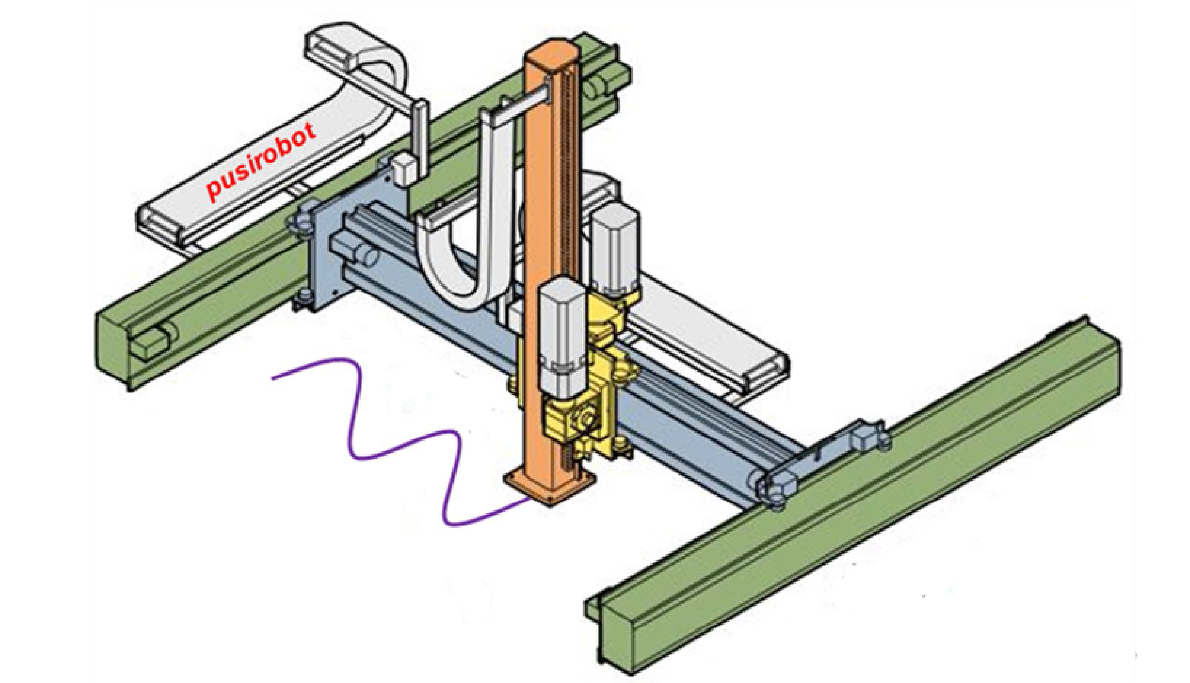- Welcome to Pulse Robot
- +86-23-63207381
- +8613677602178
- sales@pusirobot.com
Micro Canopen Bus Stepper Motor Controller PMC007CXSP2

PMC007CXSP2
√ DC12-48V, 0.4-6A
√ -40~80℃
√ Support Position/Velocity/PP/PV/PVT/SP/Analog Position/Analog velocity etc. motion mode
√ 0/2/4/8/16/32/64/128 /256 micro-step
√ Brake control support
√ Support 200-4000CPR encoder
√ Miniature size 42mmx42mmx21.6mm
Description
PMC007 is a kind of miniature integrated stepper motor microstepping controller, which can be directly installed in the rear of 42/57/86 series stepper motor. The series controller provides a variety of models which can be chosen based on bus control of CAN and different current value. It is easy to achieve industrial control network of as many as 120 nodes, which can achieve closed-loop control based on encoder according to the requirements of user. PMC007 adopts industrial standard CANOPEN DS301 control protocol, which not only greatly simplifies the complexity of the upper layer control system, but also maximally reserves flexibility of control, and is suitable for all kinds of high precision, wide range of industry using.
Technical data
General
|
PMC007 bus series
|
|
| Host |
PC,PLC,MCU
|
| Support motor |
2-phase stepper motor
|
| The development environment |
VC C# Labviwe VB Linux Python
|
| The power supply voltage |
DC12-48V
|
| Output Current |
DC 0.4-6A |
| Microstepping |
0/256 adjustable
|
| Temperature |
-40℃-80℃
|
| Maximum pulse frequency |
200K
|
| Durability |
Over 20,000 hours
|
The input
| General I/O |
Description
|
| IO function |
Emergency stop input, brake control, digital input/output, analog input, factory reset, 5V output
|
| The input specifications |
Digital input voltage: 0-5V
Analog control current input: 4~20mA Analog control voltage input:0~10V Emergency stop input voltage: 0~24V |
Communication
|
Description
|
|
Protocol |
CANopen DS301/DS402
|
| Baud rate |
5k-1M bps continuously adjustable/ 9.6K-115.2K bps adjustable
|
Demension

Download
| CAD |
.DWG
|
| 3D file |
.STP
|
| The user manual | |
| Debug software | |
| Development of the document | |
| Certificate |
Selection guide

Functional features
| Function |
Description
|
| S-curve acceleration and deceleration automatic control |
Support separate configuration of starting speed, stopping speed, acceleration and deceleration. Acceleration and deceleration support 8-gear control. Acceleration and deceleration simulation diagram is as follows

|
| PVT multi-axis interpolation |
It supports precise control of the position and speed of multiple axes on the same time coordinate, so that the end mechanism can realize straight line, arc and complex curve motion trajectory, as shown in the figure below

|
| PP model |
In the process of PP mode operation, a set of new parameters can be written by the host computer. It can be selected to smooth the transition from the previous operation parameters to the new parameters, or to run with the new parameters after the operation of the old parameters, as shown in the figure below

|

